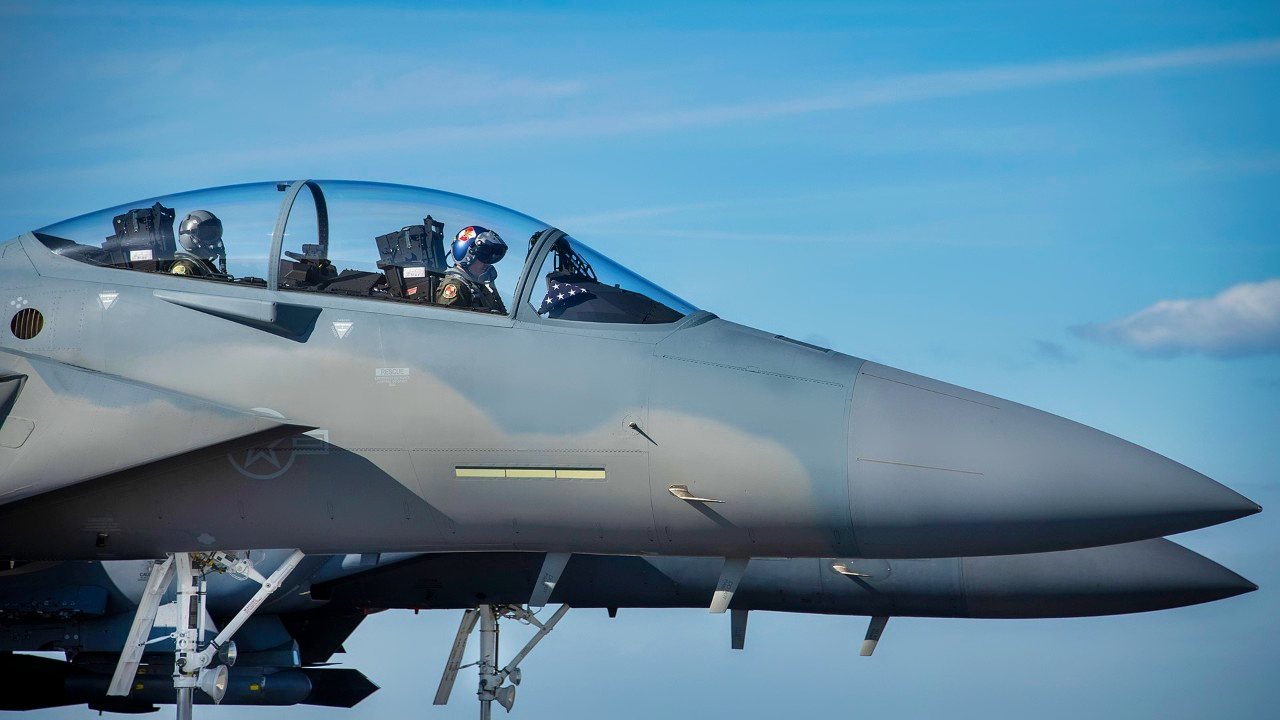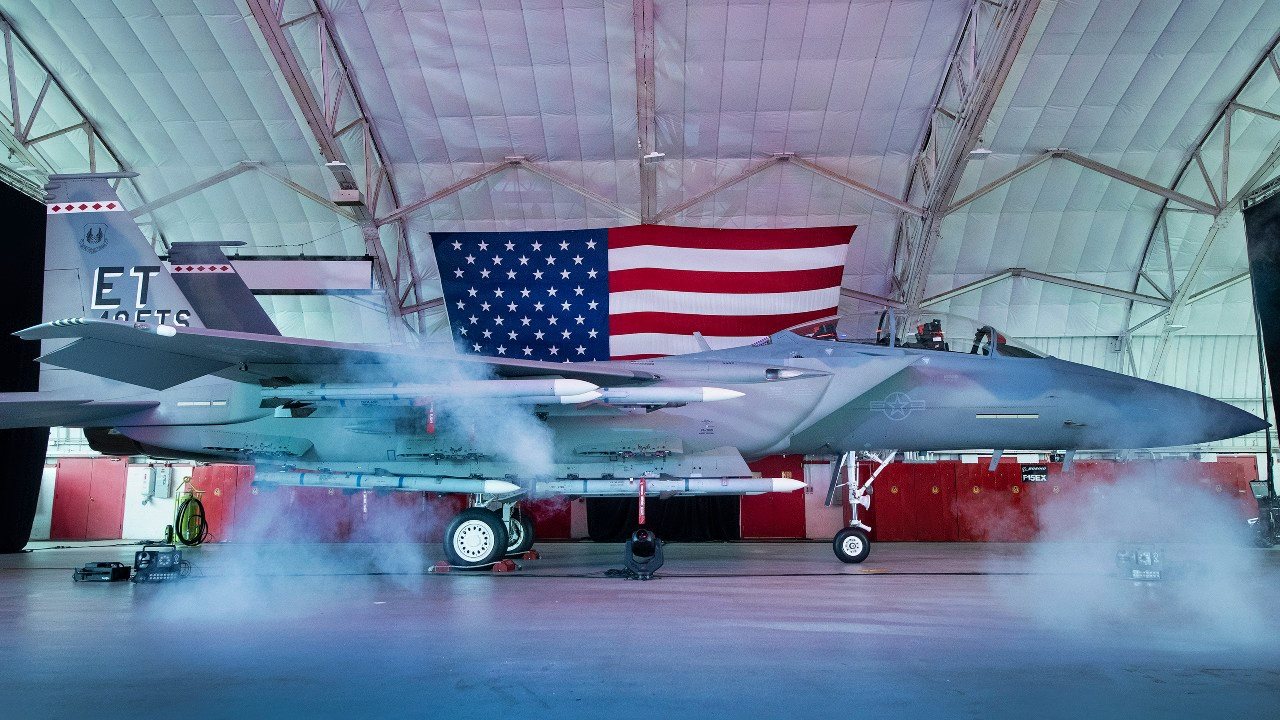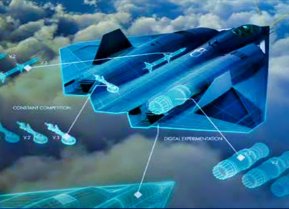The U.S. Air Force's F-15EX Eagle II Fighter Nightmare Has Begun
The U.S. Air Force’s F-15EX Eagle II, a modernized fourth-generation aircraft, is less advanced yet more expensive than the F-35.
Summary and Key Points: The U.S., Russia, and China have developed fifth-generation warplanes like the F-22 Raptor, F-35 Lightning II, Su-57, and J-20.
-The U.S. Air Force’s F-15EX Eagle II, a modernized fourth-generation aircraft, is less advanced yet more expensive than the F-35.
-The F-22, considered the best, was sidelined in favor of the multirole F-35 due to budget cuts.
-The F-15EX, despite its upgrades, is seen as a costly step backward.
F-15EX Eagle II: A Costly Step Backward in Air Power?
Critics argue that the U.S. should reinvest in F-22 production or focus on more advanced alternatives for better value and capability.
Modern geopolitics is not just about the contest of nations and their relationship with geography. It’s about technology as a force multiplier. The race to develop and deploy the best and newest technologies is at its highest pace. It is unpredictable, and it never ends.
In the case of air power, the United States, Russia, and China have all developed what experts call “fifth-generation warplanes.”
Going Backward: The F-15EX Eagle II Fighter
Think of systems like the F-22 Raptor or F-35 Lightning II, Russia’s Su-57, or China’s Chengdu J-20 Mighty Dragon. Airframes such as the F-15 – even the newest rendition, the F-15EX Eagle II – are workhorses of the U.S. Air Force’s arsenal. But they are a generation behind the warplanes mentioned above.
While many of the systems dubbed as next-generation by defense contractors do not perform as advertised, in the case of the warplane – notably the F-22 – there really is a difference between the fourth- and fifth-generation birds. Some may assume that the cost differential is significant in the F-15EX’s favor. They would be wrong. When all is taken into account, in fact, the F-15EX Eagle II has a price tag far higher than the F-35.
The F-35 Lightning II is basically a new iPhone, whereas the F-15EX Eagle II is a Blackberry. It was great for its time, but no longer competitive. The F-15EX is less advanced than the F-35 and less capable. Yet it is now more expensive than the fifth-generation warplane – and that is the platform Washington has decided to back.
The F-35 has its own problems and detractors. But it is a stealthy, intuitive warplane with advanced control systems to augment speed and maneuvers in combat, and it has far more longevity as a platform than even the newer F-15EX Eagle IIs.
The F-22 is Still the Best Plane
Then there’s America’s other fifth-generation warplane. The best warplane in the world. That’s the F-22 Raptor, which I have described in previous posts as the “Michael Jordan of warplanes.”
Just when the defense industrial base was getting in a rhythm in terms of building the F-22 in an efficient, cost-effective manner, the economic crisis of 2008 hit. Barack Obama, looking to tighten the budget when he became president, assumed that the F-22 was redundant and that the F-35, since it was a multi-branch and multinational warplane, was a better investment.
But the F-35’s weaknesses come from the fact that originally, it was really meant to fulfill a bomber role, while F-22s would protect F-35s from air attacks. Yes, the F-35 is a multirole fighter. But multirole is a little bit like being a jack of all trades, master of none. The F-22’s raison d’etre is air superiority. And in the age of multipolarity, the U.S. Air Force requires a reliable, next-generation air superiority fighter.

F-15EX Eagle II Isn’t Worth the Money
For the amount of money that the Air Force is spending on the F-15EX, it might be smarter to restart the F-22 production line that the Obama administration killed in 2009.
Anyway, the F-15EX Eagle II is a ridiculous waste of time and money. There are two alternatives that are more advanced than the F-15EX Eagle II. The U.S. government should be investing in those platforms, rather than paying for older (albeit upgraded) platforms at higher prices.

About the Author
Brandon J. Weichert, a National Interest national security analyst, is a former Congressional staffer and geopolitical analyst who is a contributor at The Washington Times, the Asia Times, and The-Pipeline. He is the author of Winning Space: How America Remains a Superpower, Biohacked: China’s Race to Control Life, and The Shadow War: Iran’s Quest for Supremacy. His next book, A Disaster of Our Own Making: How the West Lost Ukraine, is due October 22 from Encounter Books. Weichert can be followed via Twitter @WeTheBrandon.


